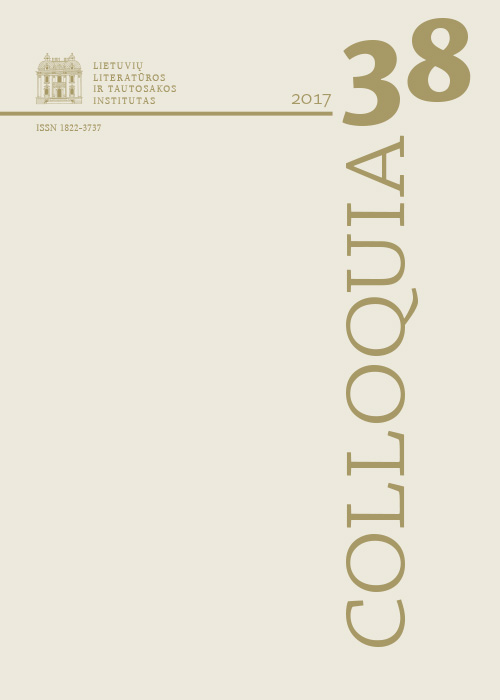The (Im)Possibility of Comparativism: Juozas Tumas-Vaižgantas and Miguel de Unamuno
Abstract
The goal of this article is to explore textual connections between Juozas Tumas-Vaižgantas and Miguel de Unamuno and to identify what might be the most fruitful paths for comparing Spanish and Lithuanian literature. The author notes that different possibilities for comparison depend on how much attention is accorded to each of the following three concepts: national literature, world literature, and general literature. When the concept of national literature is stressed it is typical for the idea that all national literatures have distinct paths of development to dominate, that the only “methodologically correct” juxtaposition is to compare direct relations between national literatures (influences, effects, appropriations, etc.). The concept of world literature is based on questions of international canon; these studies do not belong to the field of comparative literature per se, but are relevant to Lithuanian literary studies in terms of analysing reflections of international canonical elements in our literature. The basis of comparison that is most difficult to grasp methodologically is the concept of general literature. Drawing on it begs the question whether, if commonalities exist between different literatures (common tendencies, ideas, or themes), it is necessary to base research only on direct influences. The article comes to the conclusion that the most appropriate concept for comparing Lithuanian and Spanish literature is that of general literature. The comparative analysis of Vaižgantas and Unamuno uses a thematic approach, which makes it possible to see that these authors have much in common in terms of their positions in the literary field and their actual texts, despite the absence of direct biographical or textual connections.
Downloads
Most read articles by the same author(s)
- Aistė Kučinskienė, Literary Scholars and Society: Between Marginalization and Elitism , Colloquia: Vol. 50 (2022): Colloquia
- Aistė Kučinskienė, Viktorija Šeina, Saulius Vasiliauskas, Two Canonical Soviet Authors in the Post-Soviet Lithuanian School System: Petras Cvirka and Salomėja Nėris , Colloquia: Vol. 53 (2024): Colloquia
- Aistė Kučinskienė, Viktorija Šeina, Gitana Vanagaitė, Foreword , Colloquia: Vol. 53 (2024): Colloquia
- Aistė Kučinskienė, Jūratė Sprindytė, Virginija Cibarauskė, Jūratė Čerškutė, Rima Bertašavičiūtė, Apie doktorantūros studijas, laisvalaikį ir akademines erdves , Colloquia: Vol. 33 (2014)
- Aistė Kučinskienė, About Birutė, Comparative Studies, Translation, and Hope , Colloquia: Vol. 46 (2021)




